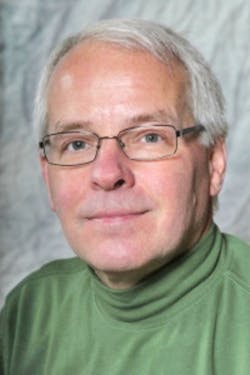AM signals: ARM, Samsung look to reinvention, Mouser looks to USB
ARM has re-invented itself as a systems company, building a broad range of silicon IP and software, writes Richard Wilson at Electronics Weekly. He quotes Jim Wallace, director of systems and software at ARM, as saying the company can no longer be called only a supplier of CPU cores. Examples of non-CPU offerings include the Mali graphics-processing cores, Cordio low-power radio IP, and AMBA on-chip interface bus.
Mouser Electronics has unveiled its newly designed USB Technology site, including a new section devoted to USB Type-C, the latest USB-IF connector standard. You’ll also find information on USB 3.1 Gen 1 (or SuperSpeed), which delivers 5 Gb/s, up to 10 times the data transfer rate of Hi-Speed USB (480 Mb/s), and USB 3.1 Gen 2 (or SuperSpeed 10 Gb/s), which defines a more efficient means of data encoding to deliver more than twice the effective data through-put of existing SuperSpeed USB (USB 3.1 Gen 1) over enhanced, backward-compatible USB connectors and cables. Some of the Featured Products include the Texas Instruments TUSB321 USB Type-C configuration channel logic and port control, the TE Connectivity USB Type-C connector, and the Fairchild FUSB300C programmable USB Type-C controller.
The world’s largest maker of smartphones is looking to become the world’s largest contract manufacturer of biologic drugs. According to the Wall Street Journal, Samsung has invested $2.74 billion over four years in production facilities and research laboratories related to the business. The Journal quotes Lee Jae-yong, Samsung’s 47-year-old heir apparent, as saying, “We see big opportunities to innovate by bringing together IT, medicine, and biologics.” The Journal adds, “Kim Tae-han, Samsung BioLogics’ chief executive, said Samsung hopes to reshape the drug-making industry by offering pharmaceutical firms a place to outsource production, in much the same way that semiconductor firms enlisted contract manufacturers to lower costs and allow them to focus more on design.”
Researchers at Koc University in Istanbul report in the ACS journal Industrial & Engineering Chemistry Research on a new road material that could de-ice itself. The researchers combined potassium formate with the polymer styrene-butadiene-styrene, then added this mixture to bitumen. The resulting asphalt significantly delayed ice formation in lab studies. The new composite released de-icing salt for two months in the lab, but the effects could last even longer when used on real roads, the researchers note.
About the Author

Rick Nelson
Contributing Editor
Rick is currently Contributing Technical Editor. He was Executive Editor for EE in 2011-2018. Previously he served on several publications, including EDN and Vision Systems Design, and has received awards for signed editorials from the American Society of Business Publication Editors. He began as a design engineer at General Electric and Litton Industries and earned a BSEE degree from Penn State.
